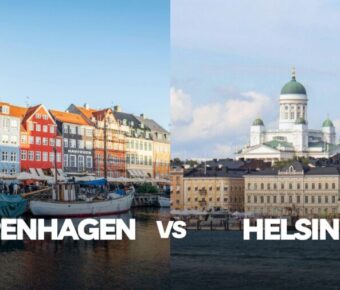
Pienza vs Montalcino: Which Hidden Tuscan Gem Offers the Ultimate Italian Experience?
Tucked away in the rolling hills of Tuscany, Pienza and Montalcino each offer distinct experiences for travelers seeking authentic Italian charm. Pienza shines as the ideal base for exploring the Val d’Orcia region, with its central location between popular towns and famous photo spots, while Montalcino stands out as a paradise for wine lovers seeking the legendary Brunello.
These medieval towns paint different pictures of Tuscan life. Pienza captivates visitors with its Renaissance architecture and peaceful streets lined with pecorino cheese shops. Montalcino brings wine enthusiasts from across the globe to sample its famous vintages and explore historic cellars.
A trip to either town promises unforgettable memories, but their unique characteristics attract different types of travelers. Each offers its own mix of restaurants, accommodations, and cultural experiences that make them special pieces of the Tuscan landscape.
Table of Contents
- Historical Overview
- Origins of Pienza
- Montalcino’s Past
- Cultural Significance
- Pienza’s Renaissance Influence
- Montalcino’s Winemaking Heritage
- Geographical Comparison
- Pienza’s Location and Terrain
- Montalcino’s Landscape
- Architectural Highlights
- The Cathedral of Pienza
- Fortress of Montalcino
- Culinary Scene
- Cheese Tasting in Pienza
- Montalcino’s Gastronomic Delights
- Accommodations and Hospitality
- Staying in Pienza
- Agriturismo Options in Montalcino
- Traveler’s Guide
- Planning Day Trips
- Navigating Through Siena and Its Surrounds
- Exploring Beyond: San Gimignano, Volterra, and Cortona
- Wine Enthusiast’s Itinerary
- Wine Tasting Tours in Pienza
- Vineyards and Wineries of Montalcino
- Local Events and Festivities
- Annual Celebrations in Pienza
- Montalcino’s Festive Calendar
- Frequently Asked Questions
- What are the must-see attractions in Pienza for a day trip?
- Can Pienza be considered an ideal central location for exploring Tuscany?
- What distinguishes the wine experience in Montalcino from other Tuscan regions?
- How can one best experience the local culture and history when visiting Pienza?
- In terms of scenic beauty and historic value, how does Pienza compare with Montalcino?
- What are some hidden gems in Montalcino that travelers often overlook?
- Book Your Dream Experience
- More Travel Guides
Historical Overview
These two enchanting Tuscan towns have fascinating origins dating back to medieval times, with each developing its own distinct character through centuries of rich history.
Origins of Pienza
Pienza started as a humble village called Corsignano. Its transformation began when Enea Silvio Piccolomini, born there in 1405, became Pope Pius II. He renamed the town Pienza after himself and hired architect Bernardo Rossellino to rebuild it as an ideal Renaissance city in 1459.
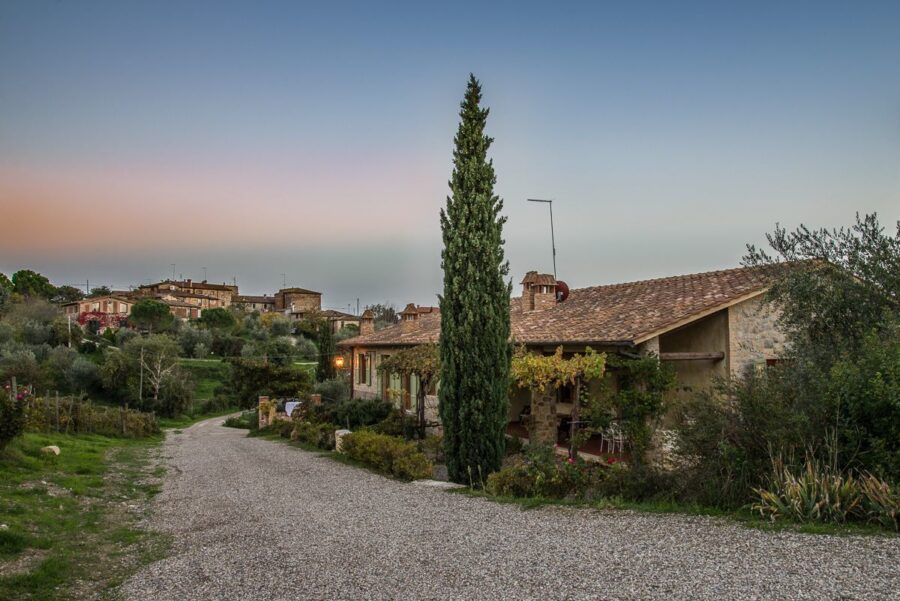
The pope’s vision turned Pienza into a stunning example of Renaissance urban planning. The town center features perfectly balanced buildings around the main square, Piazza Pio II.
The stunning Palazzo Piccolomini became the pope’s summer residence, while the Cathedral of Santa Maria Assunta showcases the finest 15th-century architecture.
Montalcino’s Past
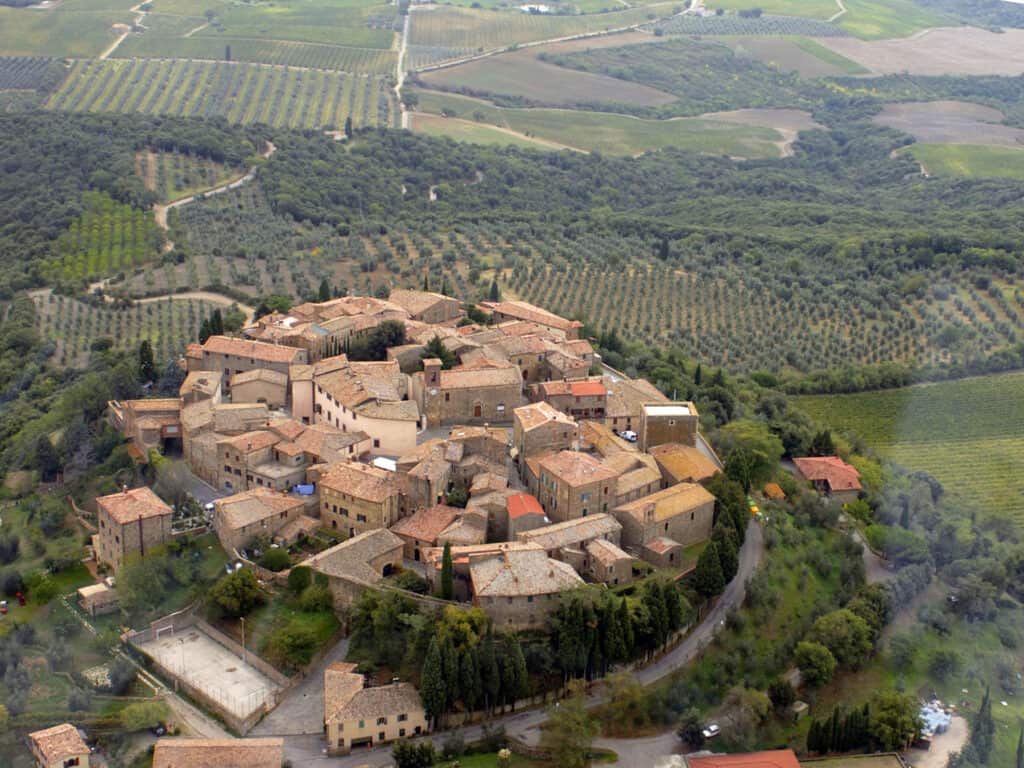
Montalcino’s history centers around its mighty 14th-century fortress, which still stands guard over the hilltop town today. The settlement dates back to ancient Etruscan times.
The town gained prominence in the Middle Ages as an important stop along the Via Francigena pilgrimage route. Its strategic position made it a key defensive outpost for Siena.
In 1559, Montalcino served as the last stronghold of the Sienese Republic before falling to Florentine forces. The town later found new fame through its Brunello wine production, which began in the 1870s.
The ancient Abbey of Sant’Antimo nearby tells tales of passing emperors and medieval monks who shaped the region’s spiritual legacy.
Cultural Significance
Both Pienza and Montalcino represent major achievements in Italian culture, each town leaving distinct marks on architecture and gastronomy that draw visitors from across the globe.
Pienza’s Renaissance Influence

Pienza stands as a masterpiece of Renaissance urban planning. Pope Pius II transformed this small village into an ideal Renaissance city in the 15th century, working with architect Bernardo Rossellino.
The town’s perfectly proportioned squares and palaces show off Renaissance principles of harmony and beauty. Palazzo Piccolomini serves as the prime example, with its elegant courtyard and hanging gardens overlooking Val d’Orcia.
UNESCO recognized Pienza’s cultural value by naming it a World Heritage site. The cathedral, with its blend of Gothic and Renaissance styles, demonstrates the transition between medieval and Renaissance architecture.
Montalcino’s Winemaking Heritage
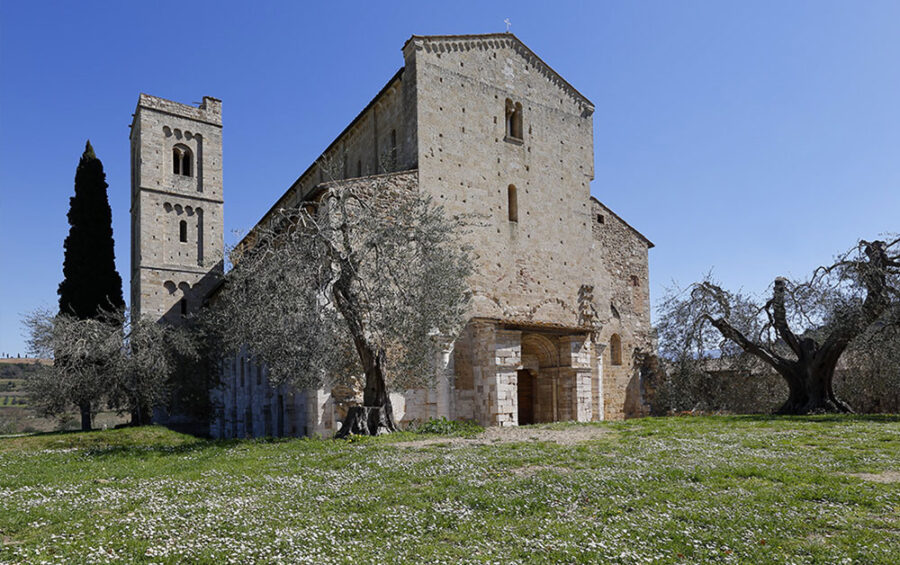
Montalcino’s identity centers on its legendary Brunello wine tradition. The town’s winemaking history dates back to the 14th century, but Brunello di Montalcino gained fame in the 1800s.
The ancient Abbazia di Sant’Antimo, just outside town, played a key role in developing local wine culture. Medieval monks helped establish early vineyards and winemaking techniques.
Local wine families pass down secrets through generations. Each winery tells its own story through unique aging processes and barrel selections. The fortress at the town’s peak now houses an enoteca showcasing the region’s finest wines.
Wine influences everything here – from seasonal festivals to daily life. Even the town’s architecture reflects this heritage, with ancient cellars built into the hillsides.
Geographical Comparison
Both Pienza and Montalcino sit perched atop hills in southern Tuscany’s stunning Val d’Orcia region, yet each town’s unique position creates distinct views and experiences for visitors.
Pienza’s Location and Terrain

Pienza crowns a hilltop at 1,640 feet above sea level, right in the heart of Val d’Orcia. Its central location puts it perfectly between Montalcino and Montepulciano, making it an ideal base for exploring the region.
The town looks out over the gentle rolling hills and cypress-lined roads that made Val d’Orcia famous. From its walls, you can spot the iconic Monte Amiata volcano in the distance.
The surrounding terrain features clay-rich soil that’s perfect for grazing sheep – a key reason why Pienza became the center of pecorino cheese production. Green pastures and wheat fields stretch as far as the eye can see.
Montalcino’s Landscape
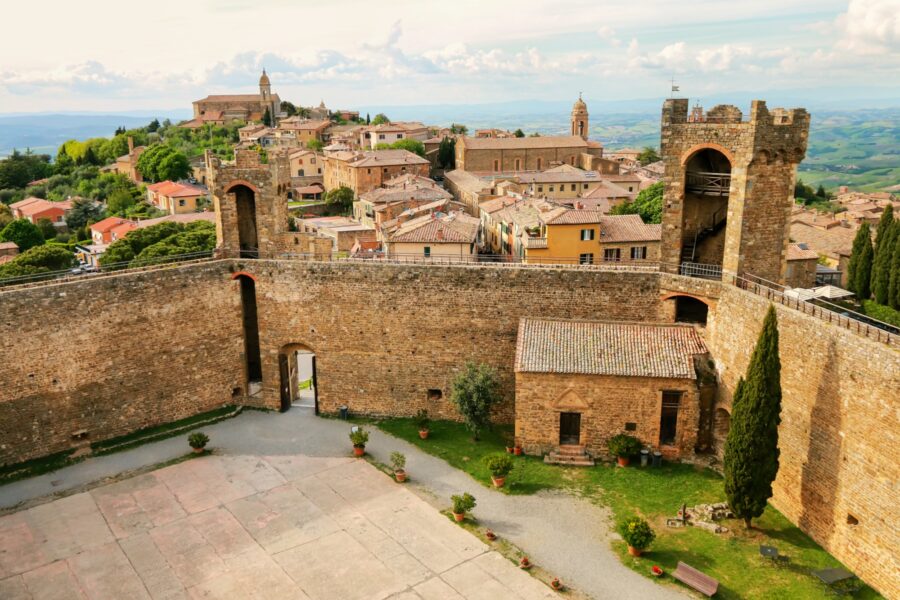
Montalcino rises higher than Pienza at 1,850 feet, sitting atop a steep hill covered in dense forests. This elevated position gives it some of the most breathtaking views in all of Tuscany.
The town’s slopes are draped with vineyards growing the prized Sangiovese grapes used for Brunello wine. The terrain here is rockier and more rugged than Pienza’s gentle hills.
Pine trees and olive groves dot the landscape around Montalcino. The high altitude and steep terrain create excellent drainage and sun exposure for grape growing – nature’s perfect recipe for world-class wines.
The dramatic cliffsides offer stunning 270-degree panoramas of the surrounding countryside, including views of Monte Amiata, Val d’Orcia, and even Siena on clear days.
Architectural Highlights
Pienza and Montalcino showcase stunning examples of Renaissance and medieval architecture that tell stories of papal power and military might.
The Cathedral of Pienza
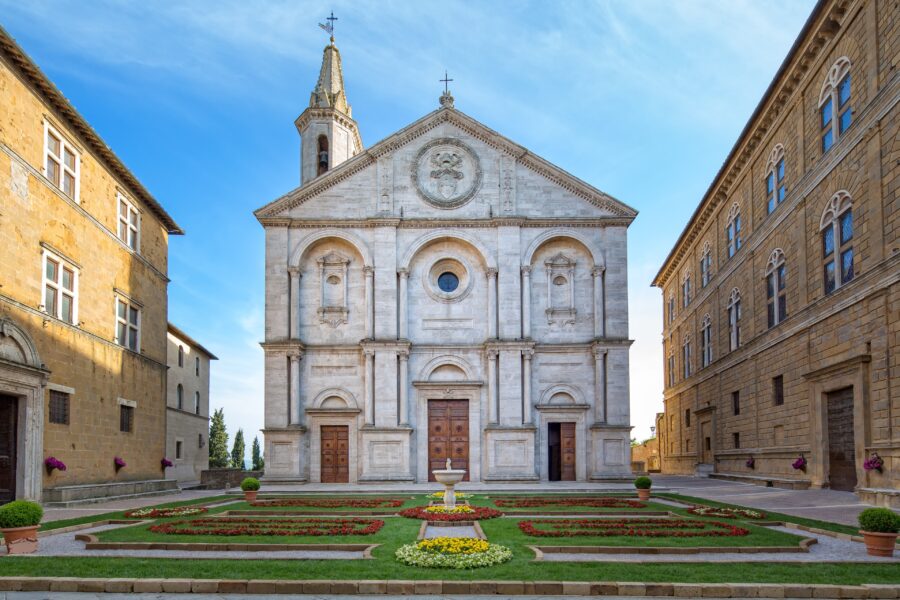
The Cathedral of Pienza stands as a masterpiece of Renaissance architecture in the heart of the town. Pope Pius II ordered its construction in 1459 as part of his vision to transform his hometown into the ideal Renaissance city.
The cathedral’s unique German-inspired design features three chapels and tall windows that flood the interior with natural light. Its marble façade blends Gothic and Renaissance styles, creating a striking visual impact.
Inside, visitors can admire beautiful 15th-century artworks, including altar paintings by some of Siena’s finest artists. The cathedral faces structural challenges due to its location on unstable clay soil, which adds an element of drama to its preservation story.
Fortress of Montalcino
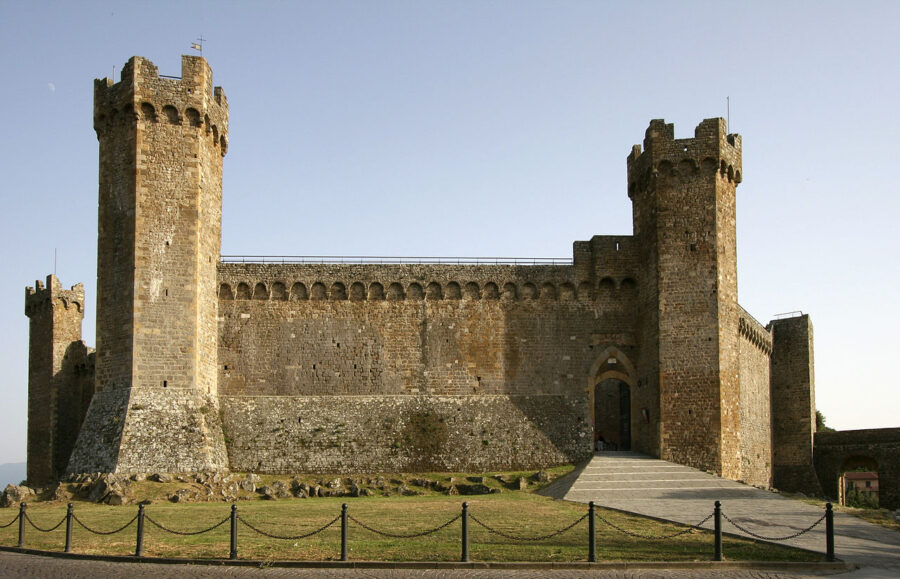
The mighty Fortress of Montalcino sits atop the highest point of the town, offering spectacular 360-degree views of the surrounding valleys. Built in 1361, this pentagon-shaped fortress has never been conquered.
The fortress features massive stone walls, corner towers, and original ramparts that visitors can walk along. Its design speaks to medieval military engineering at its finest.
The castle’s watchtowers remain intact, and the internal courtyard now hosts wine tastings and cultural events. The fortress played a crucial role during the 16th century when it served as the last stronghold of the Sienese Republic.
Culinary Scene
Both towns offer distinct food experiences that reflect authentic Tuscan flavors. Pienza stands out for its famous pecorino cheese, while Montalcino pairs amazing wines with local dishes.
Cheese Tasting in Pienza
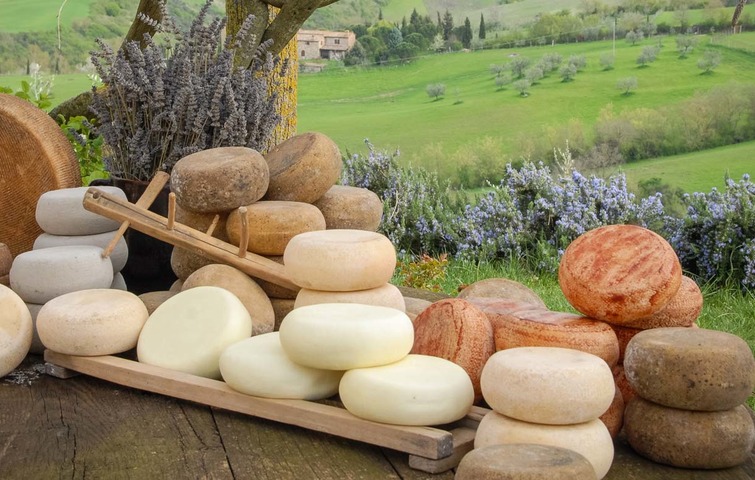
Pienza’s claim to fame is its pecorino cheese, made from local sheep’s milk. The town’s narrow streets are lined with cheese shops offering samples of different aged varieties – from fresh and mild to aged and sharp.
The restaurant Dal Falco serves incredible pecorino-based dishes. Try their pecorino-stuffed ravioli or cheese platters paired with local honey and jams.
Small cheese producers around Pienza welcome visitors for tours and tastings. You can watch the traditional cheese-making process and learn about aging techniques used for centuries.
Montalcino’s Gastronomic Delights
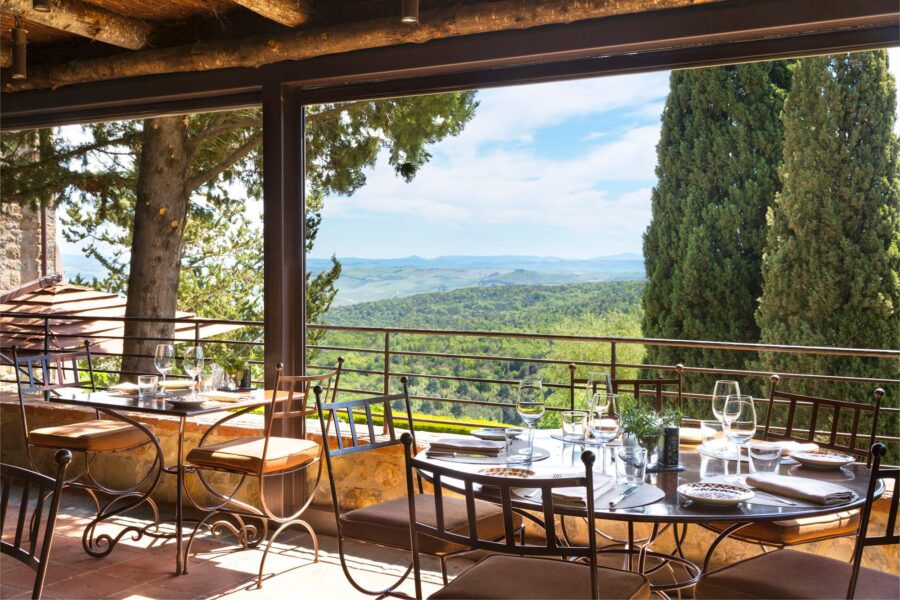
Montalcino’s food scene revolves around perfect wine pairings. Local restaurants specialize in wild boar dishes, handmade pici pasta, and grilled meats that match beautifully with Brunello wines.
Many wineries offer food and wine experiences. Book a tasting at La Potazzine or Tenuta Fanti to sample local specialties alongside their wines.
The town’s traditional trattorias serve rustic Tuscan dishes like ribollita soup and panzanella salad. Look for restaurants that use local ingredients from nearby farms and food producers.
Don’t miss trying the town’s famous almond cookies called ricciarelli – they pair perfectly with sweet Moscadello wine.
Accommodations and Hospitality
Both Tuscan towns offer unique lodging experiences, from charming boutique hotels within medieval walls to rustic farmhouse stays surrounded by rolling hills and vineyards.
Staying in Pienza
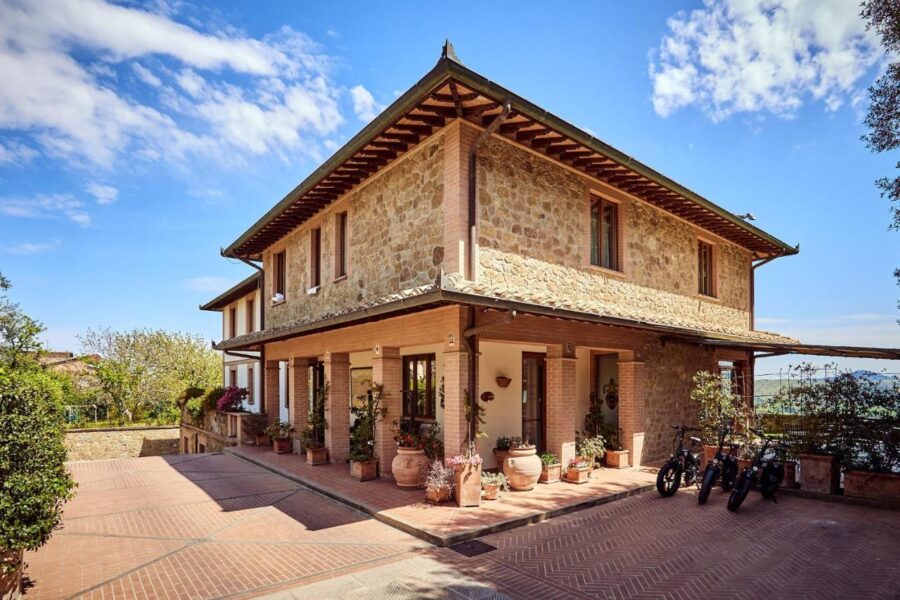
Pienza’s historic center features small, family-run hotels in restored Renaissance palazzos. Most rooms provide stunning views of the Val d’Orcia countryside. Piccolo Hotel La Valle stands out with its panoramic terrace and traditional Tuscan decor.
B&Bs dot the narrow streets, offering intimate settings with just 4-8 rooms each. Many innkeepers serve fresh local cheese and homemade pastries for breakfast.
Room rates in Pienza tend to be lower than nearby Tuscan towns. A double room typically costs €100-180 per night depending on the season.
Agriturismo Options in Montalcino
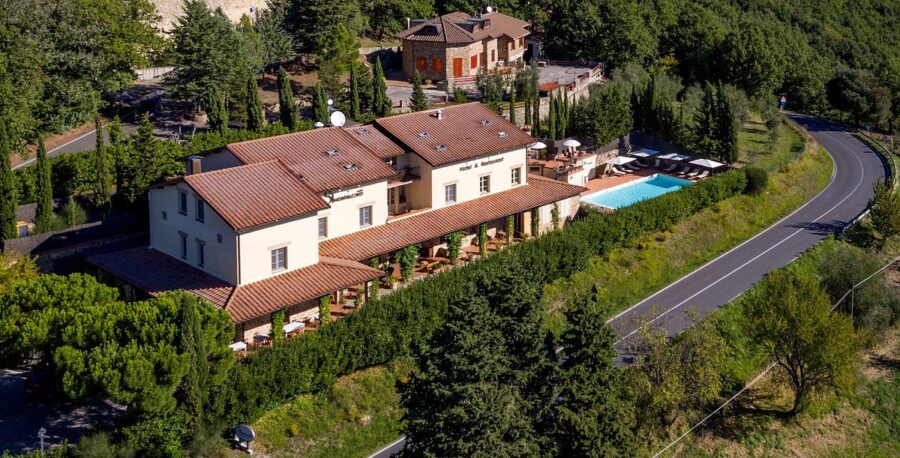
Montalcino excels in countryside accommodations among vineyards and olive groves. Many wine estates offer elegant suites in restored farmhouses.
These agriturismos often include wine tastings, cooking classes, and farm-to-table dining. Guests can watch the harvest or join truffle hunts in season.
Most properties feature pools overlooking Brunello vineyards. Room sizes range from cozy doubles to multi-bedroom apartments perfect for families.
Expect to pay €150-300 per night at quality agriturismos. The extra cost brings unique experiences like sunset wine tastings and guided vineyard tours.
Traveler’s Guide
These Tuscan towns serve as perfect launching points for exploring the region’s most beautiful destinations, with easy access to historic cities and charming villages.
Planning Day Trips
Base yourself in Pienza or Montalcino to explore the stunning Val d’Orcia. Book guided tours to maximize time and local expertise.
Both towns offer quick access to Montepulciano, just 20 minutes away by car. Visit early morning to avoid crowds and enjoy wine tastings at local enotecas.
La Foce gardens make an excellent half-day trip from either town. The famous cypress-lined roads nearby create perfect photo opportunities.
Siena sits about an hour’s drive from both Pienza and Montalcino. Plan to spend a full day exploring its medieval streets and magnificent Duomo.
The best parking options lie just outside Siena’s city walls. Arrive before 9 AM to secure spots at the Fort parking area.
Take small group wine tasting excursions through the Chianti region between Siena and Florence.
Exploring Beyond: San Gimignano, Volterra, and Cortona
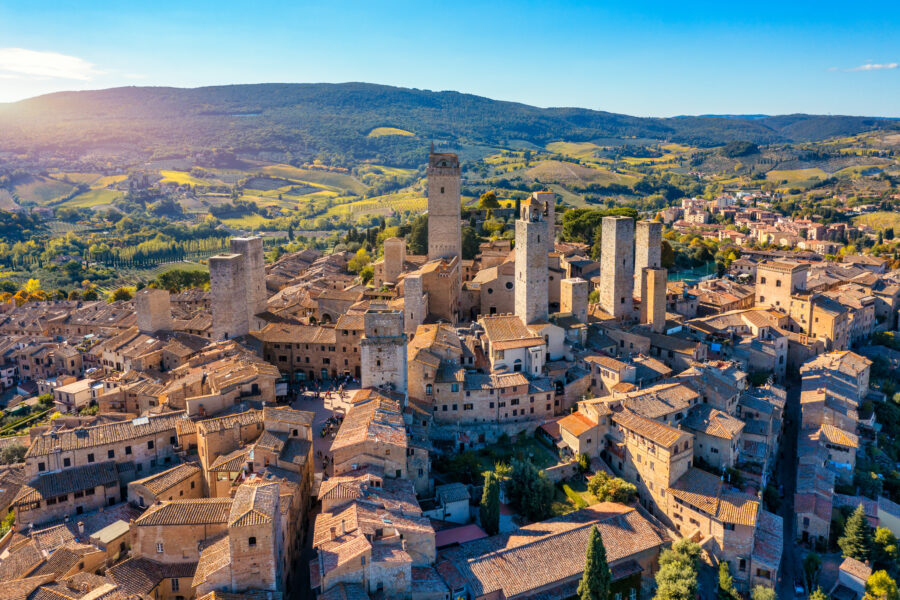
San Gimignano’s medieval towers can be reached in under 2 hours. Visit mid-afternoon when day-trippers start leaving.
The Etruscan town of Volterra offers fewer tourists and authentic crafts. Its alabaster workshops provide unique shopping experiences.
Cortona requires a longer drive but rewards visitors with spectacular valley views and Renaissance art. The town gained fame from “Under the Tuscan Sun.”
Plan these longer trips on alternate days to avoid exhaustion. Early starts help beat traffic and summer heat.
Wine Enthusiast’s Itinerary
A wine lover’s dream awaits in these two Tuscan towns, each offering unique tasting experiences among rolling hills and historic cellars. Wine enthusiasts can spend several delightful days exploring award-winning vintages and learning from passionate local producers.
Wine Tasting Tours in Pienza

While Pienza isn’t known for wine production, it serves as an excellent base for exploring nearby vineyards. The town offers intimate wine bars and tasting rooms showcasing local Vino Nobile and Brunello varieties.
Popular Wine Experiences in Pienza:
- Enoteca di Ghino: A cozy wine bar featuring daily tastings of regional wines
- La Dolce Vita Wine Shop: Offers guided tastings paired with local pecorino cheese
- Wine & Food Lab: Hosts evening wine appreciation classes
Visitors can join half-day tours that combine Pienza’s Renaissance architecture with stops at family-owned wineries in the surrounding countryside.
Vineyards and Wineries of Montalcino
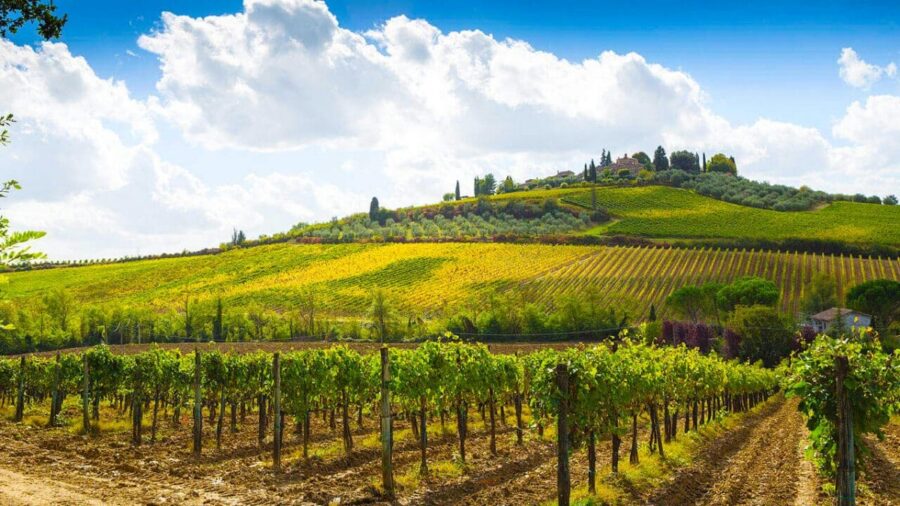
Montalcino stands as the birthplace of the famous Brunello wine. The hilltop town is surrounded by vineyards producing some of Italy’s most prestigious red wines.
Must-Visit Wineries:
- Banfi Castle: Medieval fortress with extensive wine cellars
- Ciacci Piccolomini: Historic estate offering vineyard tours
- Il Poggione: Traditional winery with stunning Val d’Orcia views
Wine tours typically last 2-3 hours and include cellar visits, production explanations, and tastings of 3-4 wines. Many wineries require advance reservations, especially during peak season from May to October.
The best times for tastings are mid-morning or late afternoon when the cellars are cooler and less crowded.
Local Events and Festivities
Both Pienza and Montalcino come alive throughout the year with lively festivals celebrating local traditions, food, and wine. These events give visitors a chance to experience authentic Tuscan culture up close.
Annual Celebrations in Pienza
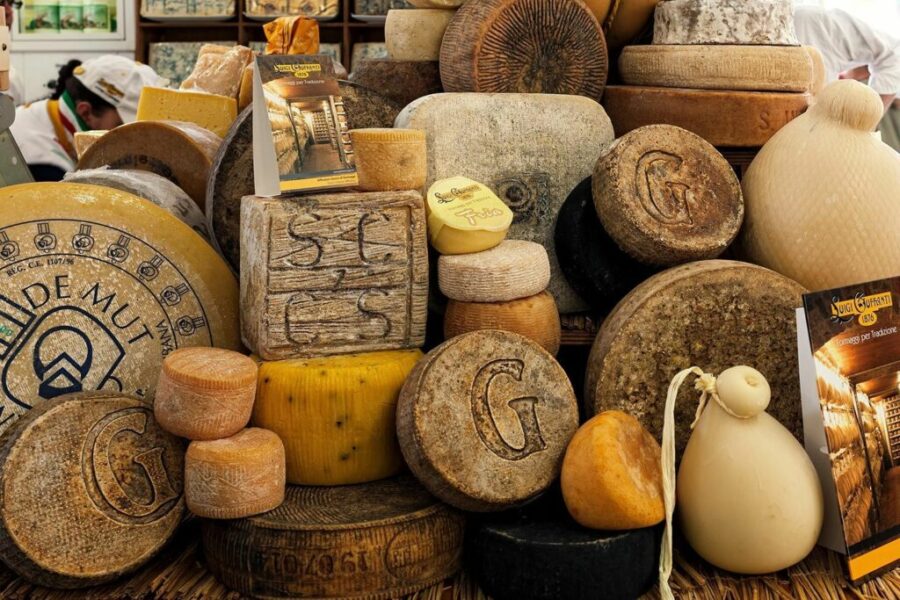
The Pecorino Cheese Festival in September draws food lovers from across Italy. Visitors can taste different ages of Pienza’s famous sheep’s milk cheese while watching cheese-making demos.
The Madonna of Loreto celebration fills the streets with candlelit processions and religious ceremonies in December. Local families join together to honor this important tradition.
Spring brings the Pienza Flower Festival, when the town’s medieval streets burst with colorful blooms. Local artists create stunning floral displays in the main piazza.
Montalcino’s Festive Calendar
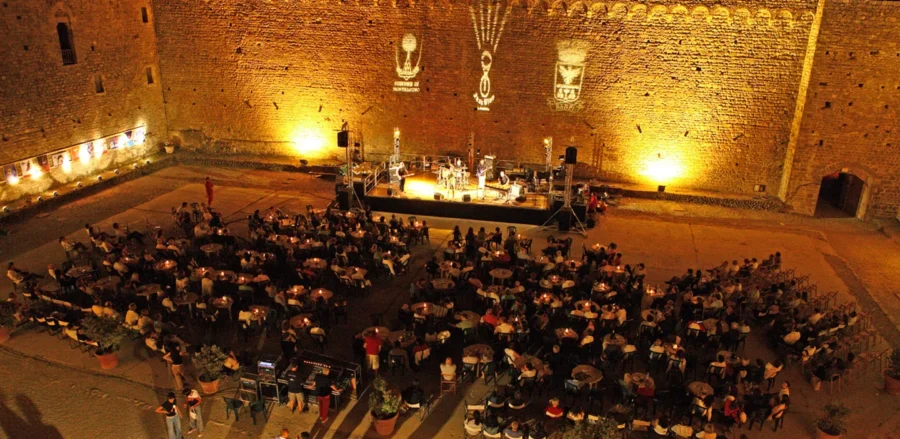
The Brunello Wine Festival takes center stage each winter, letting wine enthusiasts sample new vintages from top producers. Expert-led tastings happen in historic cellars throughout town.
Each October, the Camigliano Festival celebrates the rooster with traditional Tuscan dishes. Home cooks compete to make the best local specialties passed down through generations.
Medieval tournaments and flag-throwing shows happen during summer weekends. Musicians and performers in period costumes bring the town’s rich history to life.
The Jazz & Wine Festival in July pairs live music with wine tastings under the stars. Artists perform in the fortress courtyard while guests sip Brunello.
Frequently Asked Questions
Pienza and Montalcino offer distinct charms that attract different types of travelers. Many people want to know about the unique experiences and hidden spots in these beautiful Tuscan towns.
What are the must-see attractions in Pienza for a day trip?
Palazzo Piccolomini stands as the crown jewel of Pienza’s Renaissance architecture. Its perfectly symmetrical design and stunning gardens make it a photographer’s dream.
The Duomo of Pienza showcases remarkable 15th-century art and offers amazing views of the Val d’Orcia landscape from its steps.
The famous Corso Rossellino street features local cheese shops where visitors can sample Pienza’s famous pecorino cheese, aged in various ways.
Can Pienza be considered an ideal central location for exploring Tuscany?
Pienza sits perfectly between Montalcino and Montepulciano, making day trips easy and convenient.
The town’s location near the Val d’Orcia’s famous rolling hills and cypress trees puts visitors close to some of Tuscany’s most photographed spots.
Local buses connect Pienza to other major Tuscan towns, and the roads are perfect for scenic drives.
What distinguishes the wine experience in Montalcino from other Tuscan regions?
Montalcino’s Brunello wine ranks among Italy’s most prestigious wines. The strict production rules and perfect growing conditions create wines with remarkable depth and character.
Small family-run wineries welcome visitors for intimate tastings and cellar tours.
The hilltop location provides perfect conditions for growing Sangiovese grapes, creating wines that capture the essence of the land.
How can one best experience the local culture and history when visiting Pienza?
Early morning walks let visitors see local life unfold as shops open and cafes fill with residents.
The town’s cheese-making traditions come alive in tiny workshops where artisans still use ancient methods.
Evening passeggiata (walking) along the city walls offers chances to join locals in their daily social ritual.
In terms of scenic beauty and historic value, how does Pienza compare with Montalcino?
Pienza’s UNESCO World Heritage status recognizes its perfect Renaissance urban planning and architecture.
While Montalcino charms with medieval fortress walls and winding streets, Pienza impresses with symmetrical squares and planned views.
Both towns offer stunning Val d’Orcia views, but from different angles and elevations.
The ancient fortress houses a wine bar with panoramic views of surrounding vineyards.
Sant’Antimo Abbey, just outside town, offers peaceful moments away from tourist crowds.
Small art galleries tucked into side streets showcase local artists and craftspeople.
